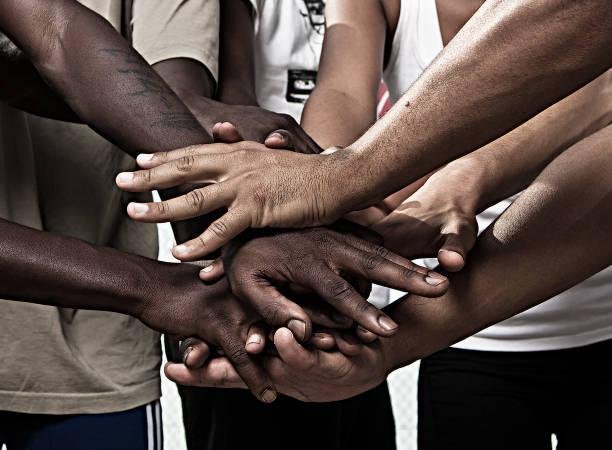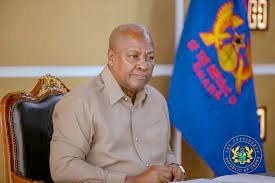Features
Emotional Art & Stealth Healing
At one time or another we all have experienced the creative and personally enriching potential of art. As a child, you probably found enjoyment in making crayon drawings, cut-paper collages, sand castles, or handprints in clay.
As an adult, you may not consider yourself to be “creative” or an “artist” but still may have experienced some therapeutic aspects of art in your daily life. You may paint or take photographs as a hobby, enjoying the process of creation and recognising that creative activities help relieve stress.
You may keep a drawing diary, sketching your dreams, noting symbols, and thinking about their meanings. You may scribble lines on the corner of your notepad on your desk, finding that it helps you think more clearly and relaxed.
All of these simple activities are ways to soothe yourself, release stress and tension, give enjoyment and pleasure, and transcend troubling feelings. They are methods of self-expression that change your state of being and tap your intuitive and creative powers.
Although you have experienced some of art making therapeutic powers, you still may not think of art as related to therapy.
Depending on your personal definition of art, you may think of it as something used as decoration, entertainment, or novelty, or only as those paintings and sculptures that are exhibited in museums and galleries.
You may see art as only child’s play, or perhaps as a diversion or hobby. While art is sometimes difficult to define, you would probably agree that art enhances your existence, but you may not be fully aware of all the ways that art can be life enhancing.
While art can serve as decoration or hang in a museum, there are other purposes for art, ones that are connected to self-understanding, a search for meaning, personal growth, self -empowerment, and healing.
Many of us have lost contact with these purposes or have not realised that art is more than novelty or ornamentation. Drawing, painting, sculpture, and other art forms are powerful and effective forms of communication, and cultures through the ages have been defined and understood through their art.
While art has been used to record human history, it has also incorporated our ideas, feelings, dreams, and aspirations. Art chronicles and conveys a wide range of emotions, from profound joy to the deepest sorrow, from triumph to trauma.
In this sense, art has served as a way of understanding, making sense, and clarifying inner experiences without words.
Art therapy has grown from this concept that art images can help us to understand who we are, to express feelings and ideas that words cannot, and to enhance life through self-expression.
Despite its acceptance as a viable treatment method and a modality for self-understanding, emotional change, and personal growth, art therapy is not widely recognised and is often misunderstood.
People are often confused about just what the term art therapy means. While it was coined to describe the use of art expression in therapy, it frequently generated some unusual assumptions.
Over the years, I have heard many interesting impressions of what art therapy might be, some of which are quite humorous. I once was asked if art therapy was only for “sick” or “disturbed” artists, providing a special treatment for curing their depressions, anxieties, or creative blocks. I was recently asked if art therapy could help improve one’s drawing and painting abilities.
Another person inquired if I worked with paintings and sculptures that had “problems.” Apparently, he imagined that art therapy could make “bad” paintings and sculptures look better! It is easy to understand that the term art therapy can be confusing when first encountered and especially if one has not had any personal experience with it.
There are several reasons art therapy is not easily understood. First, art therapy is practised with a wide range of people.
The use of art therapy has been documented with a variety of populations including children, adolescents, adults, and the elderly; people with addictions; individuals with serious and sometimes terminal illness; war veterans; people with disabilities; families experiencing difficulties; prisoners; and individuals experiencing a wide spectrum of emotional disorders.
You may have heard of art therapy being used with children who have been traumatised by abuse, with troubled families to explore their problems, or with disabled older adults in nursing homes.
You may know of a psychologist who asks his or her patients to make drawings as part of their therapy or an expressive therapist who uses art to help people deal with chronic pain or other symptoms.
You may have read in the newspaper about an artist who works with paraplegics, helping them paint, or about a therapist who has created an art studio for disabled adults.
There may be an art therapist who works in your local school system with children with learning or developmental problems, or one who works at the medical centre in your community with children and adults with cancer.
These are all common examples of where Emotional Art Therapy is used, demonstrating the vast diversity of the field. Another reason many people are confused about art therapy comes from the experiential nature of art itself.
Art therapy is a dynamic therapy, requiring one to participate in one’s own treatment, in this case through art making. Therefore, truly understanding art therapy requires first-hand experience.
…to be continued
Robert Grimmond-Thompson
Features
The wonders of love…

A haircut I had about a week ago didn’t go down well with many. Someone quite close to my heart saw it, examined it critically and felt dizzy.
“What’s this?” she proceeded to ask me.
“An international hairdo,” I replied.
She was disgusted, in fact disappointed. The problem with the haircut is that the style is neither Punk, Tokyo Joe nor Show Your Back. If anything, it is a combination of all—and I liked it, for a change.
It was when I bounded downtown that someone called me and enquired whether I was no longer a journalist. He said I looked like a well-fed Warrant Officer.
“Class One or Class Two?” I asked.
Another studied my head as if he was studying physical geography and pronounced that I looked like a boxer who can throw dangerous punches. Still, someone was of the opinion that the haircut didn’t quite fit me, but admitted that I looked like a prosperous merchant.
Commendation
I remember some three months ago, I had a haircut that made two girls fall in love with me. In spite of the fact that the barber was not a graduate, the cut was such that they couldn’t help admiring it. One of them actually ‘checked out’ the style and commended the barber.
The other was more bent on the ‘love matter’ but I was too busy to give her any attention. LOVE!
I was reminded of this when I viewed a premier showing of the latest Sikaman film titled THE POWER OF LOVE. The film kept me thinking. Some of us have long forgotten about what it is like to be head-over-heels in love. When we were students, we had such experiences because there was nothing doing anyway.
We were either learning how stylishly to smoke ‘jot’ or how romantically to fall in love. Anyhow, I was intrigued by this latest movie because of the way love unlimited was portrayed on screen. It took my memory back many years to relive those youthful days when we felt we’d really die if jilted by our lovers.
The storyline of THE POWER OF LOVE is really an exciting one. The combination of love, treachery and intrigue made me feast my eyes intently on the screen, unbelieving the extent the force of love can reach.
Ama and Afua are good friends. But when it comes to matters of the heart, they have different tastes; Ama is content with only her boyfriend (a student) and Afua samples the bigwigs around town. Afua, not satisfied with the shots in town, wants Ama’s boyfriend Joe in addition. She lies to Joe that Ama has often been picked by a man on four-wheels, whereupon Joe dismisses Ama and takes on Afua.
Ama doesn’t realise that it is her best friend Afua who is destroying her relationship with Joe until she catches her having sex with him. She collapses and goes out of her mind from the broken heart. But before then, she had been made pregnant by Joe.
Having escaped from a psychiatric hospital, she roams town murmuring Joe’s name. Heavily pregnant now, she espies Joe boarding a mini bus and runs towards him. Joe, seeing her approaching, quickly disembarks and takes off.
Ama pursues him furiously, and he runs to his home where he finds his bosom friend Frank making love to Afua. He immediately realises the treachery of Afua who instigated him to leave Ama.
He intends leaving the home in disgust and meets mad Ama at the door and embraces her despite her madness. Instantly, she regains her sanity.
Love indeed heals the wounds of the mind and it is the greatest positive force in the world. Incidentally, the greatest negative force is hatred.
Greatest force
Now coming to talk about love, I reiterate it is the greatest force imaginable. That is why a man will butcher his rival to death if he catches him climbing his wife without asking permission; and a woman will go mad if jilted.
It is also for this reason that a young boy who is scared stiff of cemeteries and under normal circumstances would not dare go near one, will this time walk boldly through a cemetery at midnight if that is the only way to his lover’s abode.
The Bible describes love for our neighbours as the surest way to heaven: Love thy neighbour as thyself.
Unfortunately, what Ghanaians are more interested and skilful in is loving the opposite sex. Romance under the cover of darkness is what we understand love to be all about. When it comes to loving our fellow human beings, we are found wanting.
People hate others just because they are of another tribe and do not speak the same native language. Too much grudge-bearing that does not augur well for national development.
War in Liberia, carnage in Rwanda are the results of the absence of love for one’s fellow being. If everybody could express a little bit of love for his fellow being irrespective of tribe, race, politics or religion, Sikaman—and indeed, the world—will be a more habitable place.
This article was first published on Saturday, October 29, 1994
Join our WhatsApp Channel now!
https://whatsapp.com/channel/0029VbBElzjInlqHhl1aTU27
Features
Monsieur’s daughter – (Part 7)
“Sir,” Ms. Odame said when David Asante answered the call, “my name is Victoria Odame. I’m a teacher at Research School in Koforidua. I would like to come and see you concerning a student called Sarah.”
“Okay, madam. I would be very glad to meet you. How can I make your trip easier?”
“I was going to join a bus to Accra.”
“Here’s what we will do. Take a taxi and ask them to bring you to Accra. I will speak to the driver, give him the directions, and pay him when you get here.”
The taxi stopped in front of the house. The gate opened, and the driver moved to the long driveway and stopped.
“What a beautiful house,” he said.
David and Adoma came out to meet them. Adoma paid the driver as David and Sarah stared at each other.
“Please come in and sit down,” Adoma invited. She served them water.
“You are welcome,” Adoma continued. “We have been waiting anxiously since you called this morning. So please, let’s hear you.”
Before she could open her mouth, Sarah rose, moved to David, hugged him, and sat on his lap. They both broke into tears. Adoma and Ms. Odame also broke into tears.
“Sorry, madam,” David said. “This whole episode has been a very difficult one. But let’s do the proper thing. Let’s hear you first, and I will also speak. I’m sure we need to answer some questions immediately.”
“Okay, sir. I have been taking an interest in Sarah because, although she’s brilliant academically, she seemed to be troubled. Following my discussions with her and some whispers I had been hearing, I went to Aboso Senior High School and spoke to your former colleague, Mr. Hanson. He told me that you were an exemplary teacher who was loved by all, and he also told me about the unfortunate events that caused you to leave for Germany. So I returned to Koforidua with the view to finding the appropriate means of helping to solve this problem.”
“Great. Ms. Odame, I have to thank you for finally helping us to solve this problem. Now, let me state the facts. This is what happened.
“Gladys and I met and got married whilst we were both teachers in the school. Some months into our marriage, she told me that she needed to spend some days with her parents, and I agreed.
“It turned out that she was actually spending time in a hotel with her ex-boyfriend, Simon. This happened again after Sarah was born. I got wind of this and told her that I was no longer interested in the marriage.
“I started preparing to travel to Germany. She pleaded for forgiveness, but I stood my ground. Then she told me that she would punish me for rejecting her.
“She came out later to say that Sarah was not my child, but Simon’s. She went and hid her somewhere, obviously expecting that I would fight to take my child. I was actually going to do that, but my parents advised me that it was almost impossible to win such a fight.
“They advised that, difficult as it sounded, I should leave the child with her because she would come back to me eventually. I have absolutely no problem taking care of you, Sarah. I am taking care of quite a number of kids who are not mine. So that is what happened. My hands were tied. I have been trying to find out how you are doing.
“I kept hearing that you were doing well at school. I also heard that Gladys and her husband were having problems, but I kept hoping that my daughter would at least be okay till it was possible for me to go for her.”
“Sarah, now you have met your dad. You will be free to—”
“I’m not going anywhere!” she declared as she held on to him.
“You don’t have to worry about that, Sarah,” Adoma said. “We have been looking forward to the day you come home. This is your home. Now, you have to meet your siblings.” She called Abrefi and Adaawa.
“Girls, we told you that you have a sister who would join us anytime. Now here she is.”
“Sarah?” Abrefi asked.
“Yes,” Adoma replied. The girls hugged her and took her away.
“Now,” David said, “I think it is time to call Madam Gladys.” He dialed the number.
“My name is David Asante. I’m here in my house with my daughter Sarah. I hear you have told her all sorts of crazy stories about me. I could make life very difficult for you, but I won’t.
“You are your own worst enemy. I don’t think you should be expecting her anytime soon. What do you say?”
Gladys stayed silent for over a minute, then cut the line.
“Food is ready,” Adoma announced. “Everybody, please come to the table.”
Sarah chatted excitedly with her siblings as Adoma and David spoke with Ms. Odame. She kept staring at her father.
“Now, Ms. Odame, after you have brought such joy into our home, should we allow you to go back to Koforidua today, or should we wait till we are ready to release you? I could call your husband and ask permission.
“And please don’t tell me you didn’t bring anything for an overnight stay. There are several supermarkets around here. We can fix that problem quickly.”
“I will beg you to release me. Now that I have been so warmly welcomed here, I already feel part of this home. Koforidua is not that far away, so I will visit often.”
“Well, let’s see what the kids have to say. Ladies, shall I release Ms. Odame to go back to Koforidua?”
“No!” they shouted, and all broke into laughter.
“Ms. Odame, I will have mercy on you. But we are going to do something to make it easy for you to visit us. My wife wants to show you something. Please follow her.”
Adoma led her to the driveway as the others followed. They stopped in front of the car.
“This is a Toyota Corolla 1600. It is very reliable and good on petrol consumption. We are giving this to you in appreciation of your help in getting our daughter back to us.
“And here in this envelope is a little contribution to help you with maintenance. And here in this other envelope is a gift to help with your children’s school fees.”
As she stood, stunned, and stared from the car to the envelopes, David put his hand around his family.
“Let’s leave her to take a look at her car. Ms. Odame, one of my drivers will drive you to Koforidua and leave your car with you. We are waiting inside.”
By Ekow de Heer

 Profile7 days ago
Profile7 days agoAlbert Litela Obidiaba: The artist who wove Ghana’s soul into the King’s Baton

 News7 days ago
News7 days agoDaddy Lumba’s wife, children run to court to injunct December 6 funeral arrangements

 News1 week ago
News1 week agoPresident Mahama to meet Auditor-General, Chief Justice and Attorney-General over misuse of public funds






